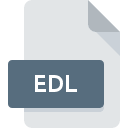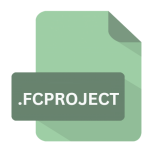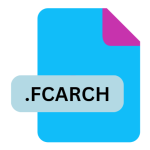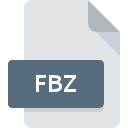.EDL File Extension

Edit Decision List File
| Developer | Update Soon |
| Popularity | |
| Category | Video Files |
| Format | .EDL |
| Cross Platform | Update Soon |
What is an EDL file?
The .EDL file extension stands for Edit Decision List, a critical component in the field of video editing and post-production.
An EDL is a text file that provides a list of instructions for editing video footage, specifying which parts of the footage to include, in what order, and how to apply various edits.
This file format plays a pivotal role in ensuring that video content is edited precisely and efficiently, making it indispensable for professionals in the film and video industry.
More Information.
The EDL format emerged in the 1980s as video editing transitioned from analog to digital technologies.
The primary purpose of an EDL is to provide a detailed list of edit decisions that dictate how video footage should be assembled.
This list includes instructions for cutting, splicing, and transitioning between clips. By defining these edits in a structured format, EDLs allow editors to easily transfer their editing decisions between different editing systems and ensure consistency in the final output.
Originally, EDLs were used primarily in professional video editing suites and broadcast environments. They allowed editors to maintain a clear record of all editing decisions, which was crucial for complex projects involving multiple edits and revisions.
Over time, the EDL format was adopted by various video editing software applications and became a standard format for sharing editing decisions between different platforms and systems.
Origin Of This File.
The Edit Decision List (EDL) format has its roots in the early days of non-linear video editing systems.
The concept originated in the analog video editing era when editors used physical tape splicing to assemble a final cut. With the advent of digital editing, the need for a more sophisticated and manageable way to represent editing instructions led to the creation of the EDL format.
Initially developed for use with video editing machines, the EDL format quickly became a standard in digital video editing systems due to its simplicity and effectiveness in managing complex editing tasks.
File Structure Technical Specification.
An EDL file is a plain text file that uses a specific format to represent editing instructions. The file structure is relatively simple and consists of several key components:
1. Header: The EDL file typically starts with a header that includes information about the file, such as the EDL format version and the editing system used. This section helps ensure compatibility between different EDL systems.
2. Edit Records: The core of the EDL file consists of a series of edit records. Each record represents a single edit decision and includes details such as:
- Clip Name: The name or identifier of the video clip being edited.
- In and Out Points: The specific timecodes or frame numbers indicating where the clip starts and ends.
- Edit Type: The type of edit being applied (e.g., cut, dissolve, fade).
- Transition Information: Details about any transitions or effects applied between clips.
3. Comment Lines: EDL files may also include comment lines, which provide additional information or annotations for the editor.
4. Formatting: The EDL file uses a standardized format, such as the CMX3600 or AAF format, to ensure compatibility with different editing systems. The specific format used may vary depending on the editing software and system.
How to Convert the File?
Converting EDL files to other formats or vice versa typically involves using specialized video editing software or conversion tools.
Most modern video editing applications support EDL files and can import or export them as needed. Here are some common scenarios:
- Importing EDLs: To import an EDL file into a video editing software, simply open the software and use the import function to load the EDL file. The software will parse the EDL and apply the editing instructions to the video footage.
- Exporting EDLs: To export an EDL file from a video editing application, use the export function and select the EDL format as the output. The software will generate an EDL file based on the current editing project.
- Converting to Other Formats: If you need to convert an EDL file to another format (e.g., AAF, XML), you may need to use dedicated conversion tools or software that supports both the EDL format and the target format.
Advantages And Disadvantages.
Advantages:
- Interoperability: EDLs are widely supported by various video editing systems and software, making them a versatile choice for transferring editing decisions between different platforms.
- Simplicity: The plain text format of EDL files makes them easy to read and edit manually if necessary. This simplicity can be beneficial for troubleshooting and making quick adjustments.
- Standardization: EDLs adhere to established standards, such as CMX3600, which ensures consistency and reliability in representing editing decisions.
Disadvantages:
- Limited Metadata: EDLs may not support all types of metadata or advanced editing features, such as color grading or effects settings. This limitation can be a drawback for complex editing projects.
- Lack of Context: EDL files provide a list of edit instructions but may lack contextual information about the content or purpose of the edits. This can make it challenging to understand the rationale behind certain editing decisions without additional context.
- Compatibility Issues: While EDLs are generally compatible with many editing systems, there can be variations in how different systems interpret and implement EDL instructions. This can lead to inconsistencies or compatibility issues in some cases.
How to Open EDL?
Open In Windows
- Use Notepad, Notepad++, or any other text editor to open EDL files. For more advanced editing, you can use video editing software that supports EDL files.
Open In Linux
- Use text editors like Gedit, Nano, or Vim to open EDL files. Linux-based video editing software that supports EDL files can also be used to import or export EDLs.
Open In MAC
- Use TextEdit or a third-party text editor like BBEdit to open EDL files. Video editing software on macOS, such as Final Cut Pro or Adobe Premiere Pro, can also handle EDL files.












